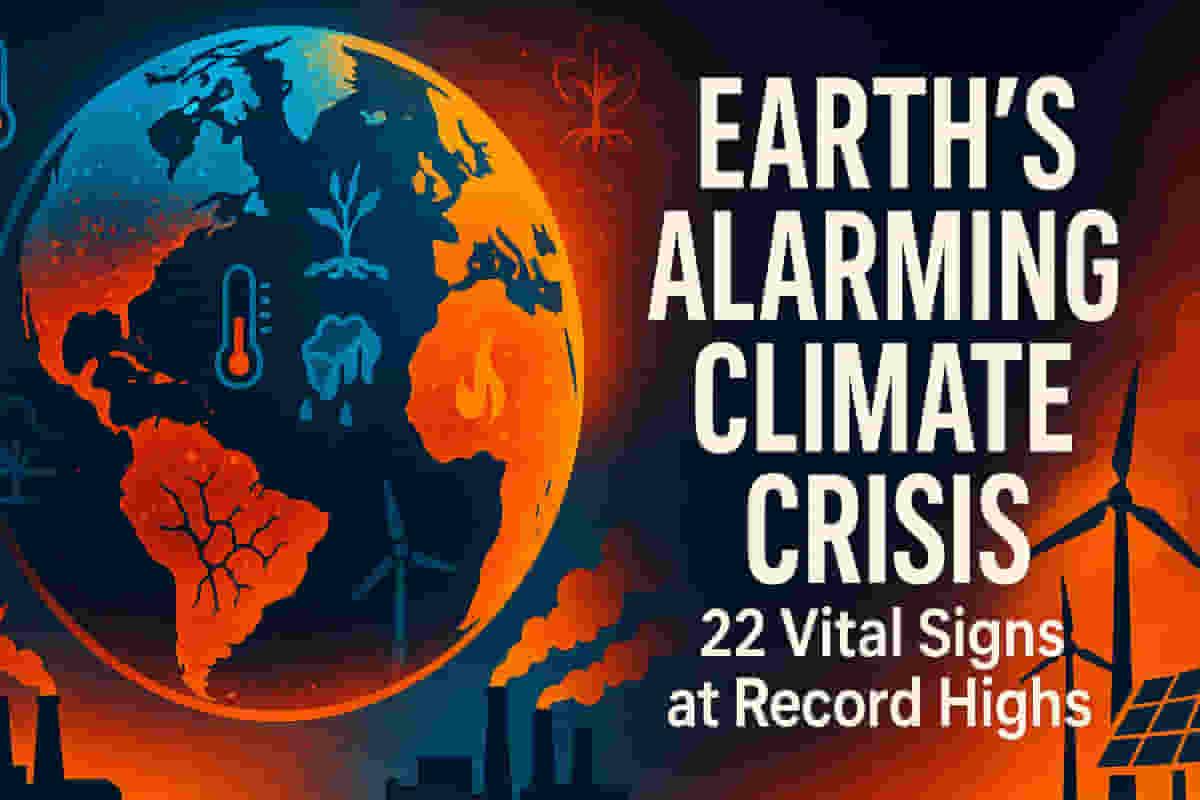Earth Shows Alarming Climate Distress: 22 of 34 Vital Signs Hit Record Highs
Environment
|
31st October 2025, 1:10 PM

▶
Short Description :
Detailed Coverage :
A recent scientific assessment has painted a stark picture of Earth's health, revealing that 22 out of 34 crucial indicators are showing record-breaking levels of distress. This comprehensive study, involving researchers from Oregon State University and the Potsdam Institute for Climate Impact Research, tracked vital signs such as global temperature, greenhouse gas concentrations, sea ice loss, and sea level rise.
The findings indicate that the decade from 2015 to 2024 was the hottest on record, with global surface temperatures significantly above historical averages. Atmospheric concentrations of greenhouse gases like carbon dioxide have reached unprecedented levels, exceeding 430 parts per million in May 2025, a figure not seen in millions of years. Extreme heat events have become more frequent, and ocean heat content has hit a record high, leading to extensive coral bleaching affecting a vast majority of the world's reefs.
Furthermore, Arctic and Antarctic ice are melting at alarming rates, and global fire-related tree cover loss has reached an all-time high. The report warns that the planet is dangerously close to crossing multiple climate tipping points – irreversible thresholds that could accelerate warming into a 'hothouse' state. Despite a notable increase in renewable energy use, the world remains heavily dependent on fossil fuels, which continue to drive emissions to record levels. China, the United States, India, the European Union, and Russia are identified as the top five emitters.
Impact This news is highly significant for global markets, particularly the energy and commodities sectors. Investors will monitor policy responses and the pace of transition from fossil fuels to renewables. Companies heavily reliant on fossil fuels may face increased scrutiny and risks, while renewable energy firms could see significant growth opportunities. For India, as a major emitter, this underscores the need for accelerated clean energy adoption, influencing economic planning and industrial policy. The increasing frequency and intensity of climate-related disasters also pose risks to insurance sectors and infrastructure investments. Rating: 8/10
Difficult Terms Explained: * **Vital signs**: Indicators or measurements used to assess the health and functioning of a system, like health indicators for humans. * **Interglacial period**: A warmer period of time between ice ages. * **Greenhouse gas levels**: The concentration of gases in the atmosphere that trap heat, like carbon dioxide and methane. * **Parts per million (ppm)**: A unit of concentration, indicating how many molecules of a substance are present in one million molecules of air. * **Ocean heat content**: The amount of heat stored in the Earth's oceans. * **Coral bleaching**: A process where corals lose their symbiotic algae due to stress (like heat), turning white and potentially dying. * **Tipping points**: Thresholds in Earth's systems (like ice sheets or forests) that, once crossed, can lead to large, often irreversible changes. * **Feedback loops**: Processes where a change in one part of a system causes further changes that amplify the original change. * **Hothouse state**: A theoretical future state of Earth with significantly higher temperatures due to runaway greenhouse effects. * **Carbon sinks**: Natural systems like forests and oceans that absorb carbon dioxide from the atmosphere.